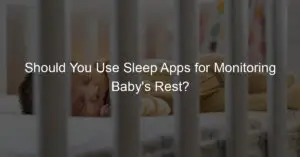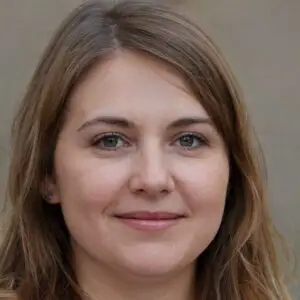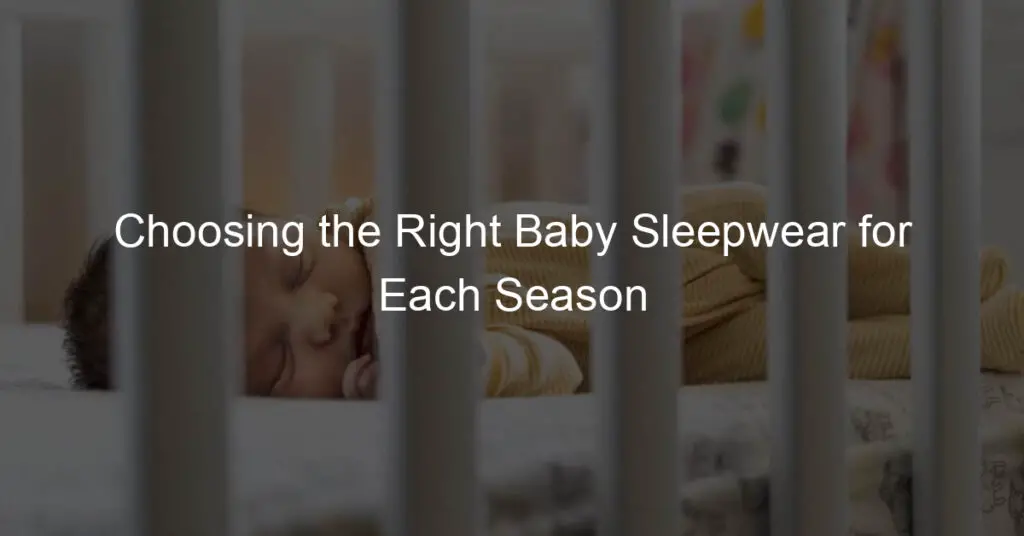Understanding the basics of bassinet use and when to transition your baby to a crib can help you navigate this essential aspect of your child’s early life with greater knowledge and certainty.
As a new parent, it’s no surprise that one of the first questions that comes to mind is, “How long can my baby sleep in a bassinet?”
This is an important question to address as we want to ensure our little ones are comfortable, safe, and well-rested during their precious sleep time.
Bassinets provide a cozy, secure, and convenient space for newborns to sleep during their first few months of life.
However, when it comes to their safety and function, there are guidelines and recommendations that should be followed.
Additionally, knowing the different types of bassinets available will help to cater to your baby’s unique sleep needs and provide an ideal sleep environment for your precious bundle of joy.
Key Takeaways
- Bassinets are suitable for newborns during their initial months, but it’s essential to follow safety guidelines.
- Remember to consider various bassinet options to select the best fit for your baby’s sleep requirements.
- Transitioning from a bassinet to a crib is a vital step in your baby’s healthy sleep development process.
How Long Can A Baby Sleep In A Bassinet
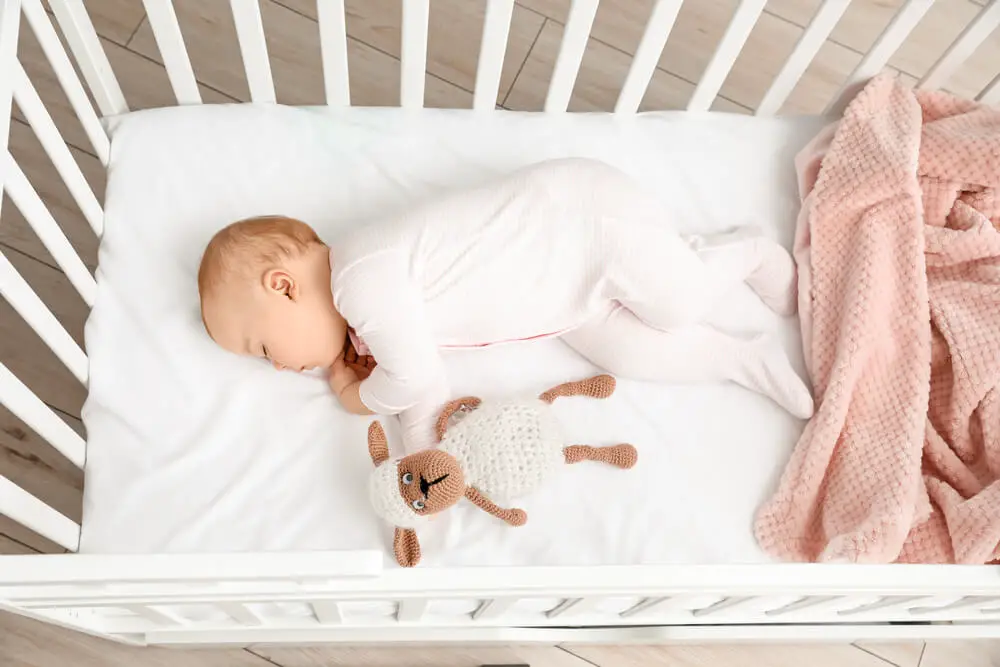
When it comes to baby sleep, I understand that the first few months are critical in establishing healthy sleep patterns. Babies typically sleep for 16-18 hours a day, with each sleep session ranging from 1-3 hours.
Sleep is essential for their growth and brain development, so it’s crucial to ensure they have a comfortable and safe sleep environment.
A bassinet is an ideal sleep space for babies from birth to around 4-6 months old. I’m well aware that bassinets provide a cozy, secure environment close to the parent’s bed, allowing for easy access during nighttime feedings and soothing.
Many bassinets feature built-in features such as gentle rocking motions, vibrations, and soothing sounds, which can be helpful in calming the baby and promoting sleep.
The appropriate age for a baby to sleep in a bassinet depends on their weight and development.
Many bassinets have a weight limit, such as 15-20 pounds, or guidelines related to the baby’s developmental milestones.
It’s essential to keep an eye on your baby’s growth and follow the manufacturer’s recommendations.
I believe that transitioning a baby from a bassinet to a crib should occur when the baby reaches the bassinet’s weight limit or starts showing signs of rolling over, sitting up, or pulling themselves up.
The transition can be gradual, and the baby’s comfort and safety should be the top priority.
In my experience, some factors may impact how long a baby can sleep in a bassinet, such as:
- Room temperature: Ideally, the baby’s room should be maintained within 68-72°F (20-22°C) for comfortable sleep.
- Sleeping position: Babies should always be placed on their backs to sleep, which reduces the risk of Sudden Infant Death Syndrome (SIDS).
- Safe sleep environment: Ensure the bassinet’s mattress is firm, and avoid using soft bedding, pillows, or loose blankets.
- Sleep schedule: Establishing a consistent bedtime routine, including regular naps, can help promote better sleep and make it easier for the baby to adjust to a crib later.
By considering all these factors and understanding babies’ sleep needs, we can optimize their sleep experience in a bassinet and ensure their safety and well-being.
Bassinet Safety Guidelines And Recommendations
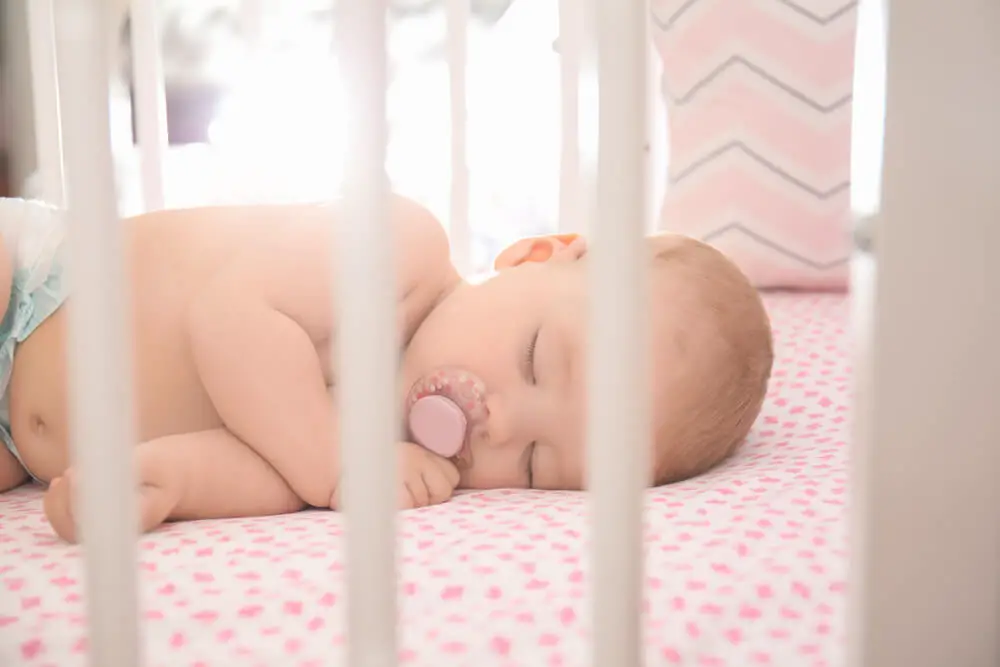
As a concerned parent, I prioritize my baby’s safety when it comes to sleep. I follow the guidelines set by the American Academy of Pediatrics (AAP) for safe sleep and Sudden Infant Death Syndrome (SIDS) prevention.
To keep my baby safe, I adhere to the following practices while using a bassinet:
- I always place my baby on their back for sleep, whether it’s for naps or nighttime slumber. This position has been proven to reduce the risk of SIDS.
- My baby’s bassinet has a firm, flat surface with a tight-fitting sheet, free from any soft objects or loose bedding. Keeping pillows, blankets, or stuffed toys out of the bassinet prevents the risk of suffocation.
- I ensure that my baby’s bassinet meets the safety standards set by the Consumer Product Safety Commission. This includes having a sturdy frame, proper ventilation, and no gaps between the mattress and sides of the bassinet.
- It’s essential to keep the bassinet in a smoke-free environment, as exposure to smoke can increase the risk of SIDS.
- To maintain a safe sleeping environment, I keep the bassinet in my room but at a comfortable distance from my bed. The AAP and the Centers for Disease Control and Prevention (CDC) recommend room-sharing without bed-sharing for at least the first six months of a baby’s life.
By following these safe sleep guidelines, I can reduce the risk of SIDS and provide a secure environment for my baby while sleeping in a bassinet.
Types Of Bassinets

When selecting a bassinet for your baby, you’ll come across various types to suit different needs. I’ll be guiding you through some of the most common options available.
Firstly, we have the portable bassinets. These are lightweight and compact, making them perfect for busy families who are on the go.
I love how convenient they are, as they can be taken to any room in your home or even used during travel. Most portable bassinets are also foldable and come with their own carrying case.
Next, we have mobile bassinets. These bassinets have wheels or casters, which make it easy to move them from room to room effortlessly.
This type of bassinet can be handy if you want to keep your baby close while you work or do household chores. Just remember to lock the wheels when the bassinet is stationary for safety.
For parents with limited living space, a mini crib could be an ideal choice. These are smaller than full-size cribs and can be converted into a small toddler bed.
This means your baby can continue using it even after they outgrow the bassinet stage. I think it’s a great investment for families living in small apartments.
Then, there are the full-size crib options, which have built-in bassinets. These products offer a safe sleeping environment for your baby right from their birth.
The bassinet is usually located at the upper part of the crib, providing easy accessibility. Once your baby outgrows the bassinet, you can remove it and continue using the crib without any additional purchases.
When browsing through baby products, you may have come across some bassinets that are part of travel systems or stroller sets.
These bassinets can be detached from the main unit and used independently, providing flexibility to keep your baby comfortable during outdoor outings.
I hope this information helps you make an informed decision on the type of bassinet that will work best for you and your baby’s needs.
How Long Can A Baby Sleep In a Bassinet

In my experience, a baby can typically sleep in a bassinet for up to six months. The exact duration may vary depending on factors like the baby’s size, development, and the bassinet’s weight limit.
As a general rule, once the baby can roll over or sit up, it’s time to transition to a crib.
While bassinets provide a cozy space for newborns to sleep, they’re not designed for long-term use. In most cases, the weight limit falls between 15 and 20 pounds, so it’s essential to check your bassinet’s specifications.
Exceeding the weight limit can pose a safety risk to your baby.
When it comes to naps, the same guidelines apply. A bassinet is ideal for daytime naps during the first few months of your baby’s life.
Just like at night, monitor their growth and development to ensure they remain safe in the bassinet.
One of the primary telltale signs that it’s time to transition from a bassinet to a crib is when the baby starts rolling over or sitting up.
These milestones are signs that the baby is becoming more mobile, and they may outgrow the limited space of a bassinet soon.
Cribs offer more room for movement, which is essential for babies learning to roll, sit, and eventually stand.
It’s important to remember that every baby is unique and may reach these milestones at different times. With that in mind, closely observe your baby’s growth and behavior while they sleep in the bassinet.
This will help ensure their safety and comfort, making for a better night’s sleep for both you and your little one.
Transition From Bassinet to Crib
As my baby grows and develops, it becomes essential to transition from a bassinet to a crib for their safety and comfort. A crib provides more space and a secure environment for my little one.
Typically, the transition should happen when my baby is around 4-6 months old or when they begin to outgrow their bassinet in terms of weight or length.
I also need to ensure that my baby has developed the necessary motor skills, such as rolling over and sitting up independently, before making the move.
When planning the transition, I consider room sharing for a while, as it offers a few benefits. Studies suggest that sharing a room with my baby for the first six months reduces the risk of Sudden Infant Death Syndrome (SIDS).
Room sharing also allows me to easily attend to my baby’s needs, making nighttime feedings and diaper changes convenient.
Nevertheless, I avoid bed-sharing, as it can increase the risk of SIDS and pose additional hazards like suffocation or entrapment.
In preparation for the transition, I focus on:
- Gradual adjustment: To help my baby get familiar with the crib, I first place it in the same room as the bassinet. This helps my baby associate the crib with sleep and their existing sleeping environment.
- Establishing a routine: Consistent bedtime routines can make the transition smoother. I engage in activities like reading to my baby, dimming the lights, or playing gentle lullabies before bedtime to signal that it is time to sleep.
- Providing comfort: Transitioning can be stressful for my baby, so I try to make the crib as comfortable as possible. I use a firm mattress with a tightly fitted sheet while avoiding pillows, soft bedding, and stuffed toys to minimize suffocation risk.
- Staying patient: Lastly, I understand that switching from a bassinet to a crib is a significant change for my baby, and it may take time for them to adjust. Being patient and responsive to my baby’s cues is important during this transition phase.
By paying attention to these key points and ensuring the safety and comfort of my baby, I can successfully navigate the transition from a bassinet to a crib.
New Parent’s Guide

As a new parent, I understand the convenience and importance of using a bassinet for your baby’s sleep. Bassinets provide a cozy, safe, and portable sleeping environment for your little one.
In this guide, I will share some recommendations and address common anxieties new parents may have about using a bassinet.
During the first few months of your baby’s life, having them sleep in a bassinet in your room offers numerous benefits.
It allows for easy access to your baby during nighttime feedings and provides reassurance that they’re safe and close by.
The American Academy of Pediatrics (AAP) suggests room-sharing without bed-sharing for at least the first six months, as it can reduce the risk of sudden infant death syndrome (SIDS).
While bassinets are ideal for the early months, it’s essential to pay attention to weight and developmental milestones when determining how long your baby can sleep in one.
Many bassinets have a weight limit, which is typically around 15 to 20 pounds. Always check the manufacturer’s recommendations for specific weight and age guidelines.
Aside from weight, your baby’s motor development plays a crucial role in determining when to transition from bassinet to crib.
If your baby starts showing signs of rolling over, pushing up on their hands, or pulling up, it’s time to consider the switch.
This usually occurs between three to five months of age. Remember, your baby’s safety should be the top priority.
To alleviate some anxiety and ensure your baby’s comfort, choose a bassinet that meets safety standards. Look for a sturdy design with a firm, flat mattress, and a snug-fitting sheet.
Mesh sides are a great choice for promoting airflow. Also, keep soft objects, loose bedding, and toys out of the sleeping area to reduce any risk.
As a new parent, you can confidently rely on a bassinet for your baby’s sleep during their first months. Just remember to monitor your baby’s growth and development and transition to a crib when necessary.
Your baby’s safety and comfort are always the priority.
Navigating Baby Sleep Habits And Needs

As a parent, I understand the challenges of figuring out a baby’s sleep habits and needs. In the first few months, newborns require frequent feedings, which can disrupt their sleep and our own.
When it comes to room sharing, I’ve found that having the baby sleep in a bassinet close to my bed allows for easier nighttime feedings, especially for breastfeeding mothers.
This arrangement also provides reassurance and comfort for both of us during these early months.
During those first weeks, my baby was sleeping in cycles of around 2-3 hours, waking up for feedings and diaper changes.
Swaddling was a helpful technique for calming my baby and promoting longer stretches of sleep.
I also incorporated white noise to create a soothing environment that mimicked the sounds they heard while in the womb.
As my baby grew, I noticed that they started hitting milestones like sleep regression which is common.
For this reason, it’s important to be prepared for those changes and adapt our strategies accordingly.
I made sure to offer a pacifier during bedtime and nap times to help calm any fussiness.
To create a consistent bedtime routine, I used a combination of feeding, bathing, and reading to my baby.
This routine helped signal to them that it was time to sleep and made the transition to bedtime easier.
Ensuring my baby was properly fed before bedtime also contributed to longer stretches of sleep.
Every baby is different, and understanding our own baby’s unique sleep patterns and needs allows us to create the best environment and routine for them.
As a parent, it’s essential to be adaptable and patient as we navigate these early months and help our little ones establish healthy sleep habits.
Setting Up an Ideal Sleep Environment
When my baby is ready to sleep, I believe it is important to create an ideal sleeping environment that promotes healthy sleep.
I strive to provide a space that is not only safe but also comfortable and calming for my little one.
One convenient solution for creating such an environment is using a playard or bassinet.
After setting up the bassinet, I need to ensure that all the bedding is safe and snug. I avoid using any loose blankets, pillows, or soft toys in the sleep space, as they can pose a risk of suffocation.
Instead, I make use of a fitted sheet designed expressly for the bassinet’s dimensions.
Opting for sleepwear such as wearable blankets keeps my baby cozy while minimizing potential hazards.
Temperature regulation plays a crucial role in establishing an ideal sleep environment. I make sure the room temperature is maintained around 68-72°F (20-22°C), keeping the area neither too hot nor too cold.
It is equally important to ensure proper ventilation, as babies need fresh air circulating in the room for optimal sleep.
I found that using blackout curtains can minimize external light and create a serene atmosphere conducive to restful sleep.
Furthermore, I recognize that a consistent, low-level noise in the background is soothing to infants.
As a result, I opted for a sound machine, which offers a variety of calming white noise options to choose from.
Paying attention to these details, I was able to create a sleep sanctuary for my baby in their bassinet.
This not only encouraged quality sleep but also fostered a sense of security and comfort for them each time they were laid down to rest.
Final Words
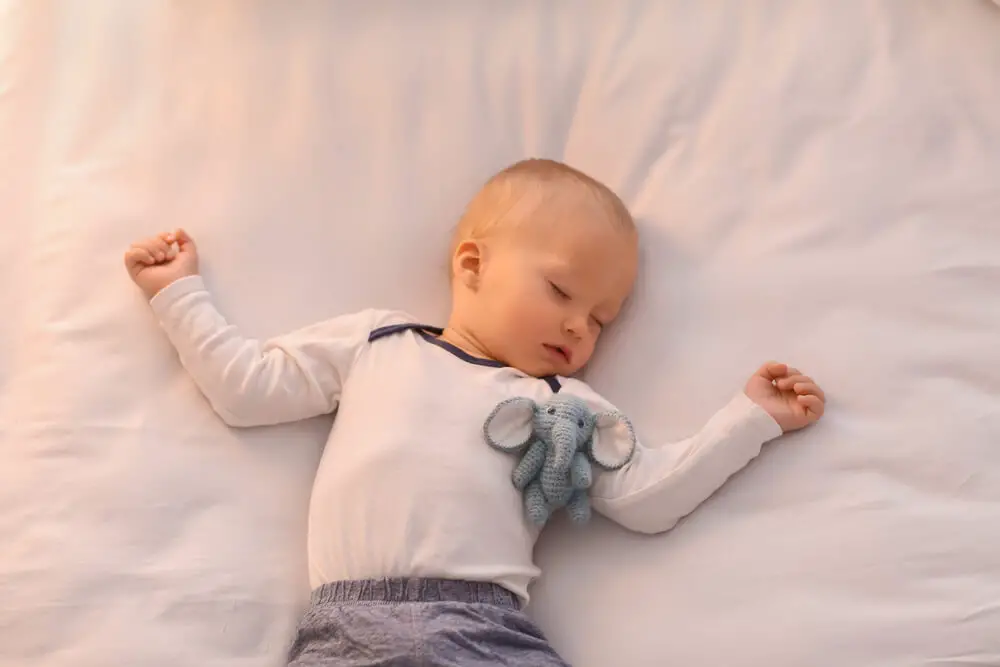
When it comes to understanding how long a baby can sleep in a bassinet, I’ve taken the time to gather insightful information.
It’s important for me to ensure the safety and comfort of the baby, as well as provide peace of mind for new parents.
From my research, I found that babies can typically sleep in a bassinet until they reach 4 to 6 months of age.
Yet, this timeframe can vary depending on factors such as the baby’s weight, mobility, and the bassinet’s design.
It’s crucial to keep an eye on the baby’s development. If they’re starting to roll over or sit up, it may become unsafe for them to continue sleeping in a bassinet.
In that case, transitioning to a crib would be the most appropriate move.
Lastly, safety guidelines for bassinets should be carefully followed. Make sure the bassinet meets the required safety standards, and always place it on a firm and flat surface.
Keep soft objects and loose bedding out of the bassinet to avoid any risk of suffocation.
Following these recommendations can ensure that the baby will have a safe and comfortable sleep environment in their bassinet.
Frequently Asked Questions
When should a baby transition from a bassinet to a crib?
I recommend that a baby should transition from a bassinet to a crib when they reach the weight limit of the bassinet, which is typically around 15-20 pounds, or when they can sit up, pull themselves up, or rollover.
This usually happens between 4 to 6 months of age.
What are the signs that a baby has outgrown their bassinet?
Signs that a baby has outgrown their bassinet include reaching the weight limit, becoming too tall or mobile for the space, or exhibiting physical developments such as sitting up, rolling over, or pulling themselves up.
These milestones may indicate that it’s time for a safer, more spacious sleeping environment like a crib.
How do I safely transition my baby from a bassinet to a crib?
To safely transition your baby from a bassinet to a crib, start by having them take naps in the crib during the day.
This familiarizes them with the new environment. Ensure the crib meets safety standards, such as having a firm, tight-fitting mattress, and no loose bedding.
Maintain a consistent bedtime routine and keep their sleeping area free from distractions.
Can a baby sleep in a bassinet once they start rolling over?
Once a baby starts rolling over, it’s generally not safe for them to continue sleeping in a bassinet.
This is because they could potentially roll into the sides of the bassinet, increasing the risk of suffocation or injury.
At this point, it’s best to transition them to a crib for safety.
Are there any AAP-recommended bassinets to consider?
The American Academy of Pediatrics (AAP) does not endorse specific bassinet brands or models.
Regardless, they recommend choosing a bassinet that meets the safety standards of the Consumer Product Safety Commission (CPSC).
Ensure that it has a firm, flat surface with no soft bedding or toys inside.
What factors determine the duration of a baby’s stay in a bassinet?
The duration of a baby’s stay in a bassinet depends on factors like their weight, height, and developmental milestones, such as rolling over, sitting up, or pulling themselves up.
Bassinets usually have a weight limit of around 15-20 pounds. Most babies transition from a bassinet to a crib between 4 to 6 months of age.






